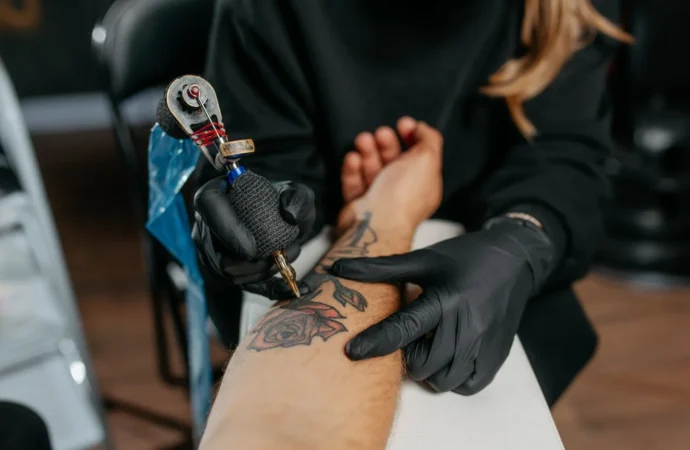In the modern era, tattoos have transcended their subcultural origins to become a mainstream form of self-expression. With an estimated one-third of Americans now sporting at least one tattoo, the health implications of this widespread practice have come under closer scrutiny. Recent findings have raised concerns about the potential link between tattoo inks and increased
In the modern era, tattoos have transcended their subcultural origins to become a mainstream form of self-expression. With an estimated one-third of Americans now sporting at least one tattoo, the health implications of this widespread practice have come under closer scrutiny. Recent findings have raised concerns about the potential link between tattoo inks and increased cancer risk. As we delve into this issue, it’s vital to dissect what this means for the health-conscious individual considering or already having tattoos.
Are Tattoos a Health Risk?
The art of tattooing involves injecting ink into the dermis layer of the skin, where the pigments remain trapped, theoretically for a lifetime. It is this permanence that has sparked concerns. While tattoos are generally considered safe when applied by professionals in controlled environments, questions about the long-term effects of ink components have emerged.
Recent analyses involving twin studies have suggested that individuals with tattoos may face a higher risk of developing certain cancers, notably skin cancer and lymphoma. The relationship is especially pronounced with larger tattoos, hinting at a possible dose-response effect. However, it’s essential to understand that these findings do not establish a definitive cause-and-effect relationship but rather highlight a potential association that warrants further exploration.
What Could Be Causing This Association?
The hypothesized link between tattoos and cancer could be related to how tattoo ink interacts with the body’s cells. It is possible that certain chemicals in the ink may lead to cellular changes or inflammation, setting the stage for cancerous developments. Some tattoo inks contain metals and other compounds known to be irritants or allergens, which could have adverse reactions over time.
Furthermore, the potential for tattoos to obscure early signs of skin cancer poses another risk factor. In cases where tattoos cover moles or other skin anomalies, early detection of changes may be hindered, potentially delaying diagnosis and treatment. Thus, while tattoos may not directly cause cancer, they could complicate or exacerbate prognoses.
How Should One Approach Tattooing?
For those considering getting a tattoo, informed decision-making is crucial. Here are some considerations:
- Research Tattoo Parlors: Choose studios and artists who adhere to strict hygiene and safety standards. Sterile equipment and proper ink storage are non-negotiable.
- Inquire About Inks: Ask about the composition of the inks used. Some inks may contain less harmful ingredients than others, and reputable artists should be transparent about their materials.
- Monitor Skin Health: Regular self-examinations of your skin are important, particularly if tattoos cover large areas. If you notice any changes in your skin, consult a healthcare professional promptly.
- Consider Placement and Size: Being mindful of the size and location of tattoos can help mitigate some risks. Avoid covering moles or lesions, and be aware of changes in tattooed areas.
The Path Forward: More Research Needed
As it stands, the connection between tattoos and cancer remains an area of active research. More comprehensive studies are needed to understand fully the mechanisms at play and to evaluate whether specific types of inks or tattooing practices pose greater risks. The goal is to ensure that tattooing, as a form of personal expression, can be enjoyed safely without compromising health.
In conclusion, while current findings are not conclusive, they provide a valuable impetus for caution and further research. As public health advocates, it is crucial to stay informed about potential risks and to engage in practices that prioritize safety and well-being. Until more definitive answers are available, the best approach is one of awareness and proactive health monitoring.













Leave a Comment
Your email address will not be published. Required fields are marked with *